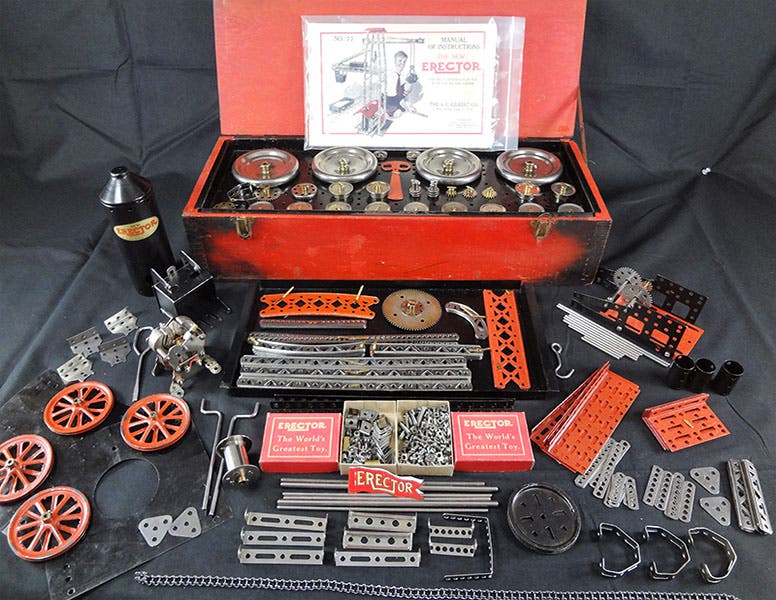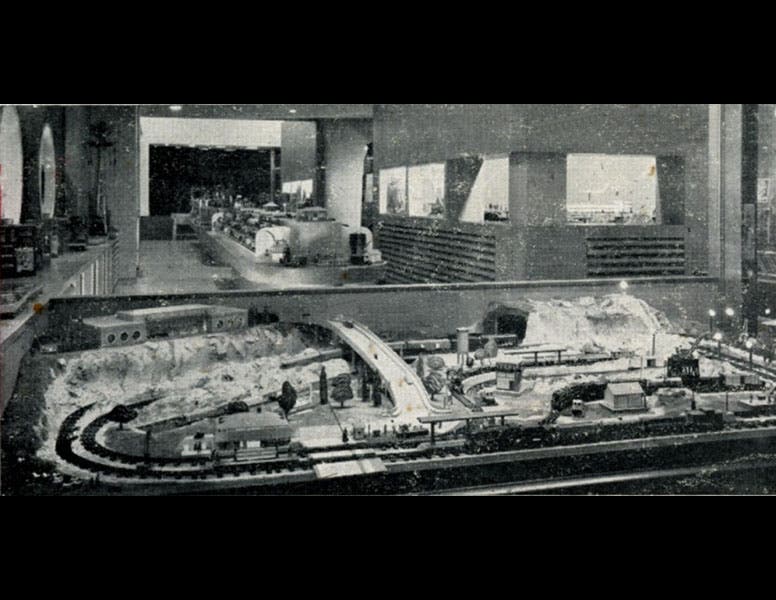Scientist of the Day - A. C. Gilbert
Alfred Carlton Gilbert, an American inventor and toy-maker, was born Feb. 13, 1884. In 1913, Gilbert marketed his first Erector Set, and it remained a mainstay of the mechanical toy industry until the A.C. Gilbert company went under in 1967 (Gilbert himself died in 1961). The wonderful thing about the original Erector Sets is that the parts were very simple--pulleys, gears, wheels, axle rods, plates, perforated ribs of various lengths that could be put together to form beams, and, in the more expensive sets, an electric motor--and yet you could assemble the parts to make an almost endless variety of real structures and machines. And unlike today's mechanical construction sets, which mostly snap together, you built an Erector Set model with nuts and bolts, using real tools, such as screwdrivers and wrenches. We see above a set from the 40s, with which one could build a working Ferris wheel (first image), and another from 1928, for constructing a steam shovel (second image). In a portrait of an older Gilbert, he is posing with a completed Ferris wheel (third image).
Gilbert also acquired the American Flyer model railroad line in the late 1930s and turned it into a formidable competitor for Lionel trains. The Gilbert trains used a smaller S gauge track and were noted for being more realistic than the larger Lionel models (fourth image). Disgruntled that the American education system did not offer instruction in invention, he opened the Gilbert Hall of Science in the Flatiron district of New York, where one could learn about inventions, and also perhaps be persuaded by operating American Flyer train layouts and Erector set constructions to purchase some of the A.C. Gilbert line. The photo above of the American Flyer layout was taken in the Gilbert Hall of Science.
Gilbert marketed other educational toys, such as chemistry sets, but a real blockbuster was his U-238 Atomic Energy Lab, first sold in 1951, complete with cloud chamber, Geiger counter, and your very own samples of uranium and polonium (fifth image). Most A. C. Gilbert sets had numbers like 8½ or 26. The Atomic Energy set was number U-238. It was withdrawn from the market in 1952, supposedly because its high price ($50) found few buyers, but there may have been other forces at work.
The Eli Whitney Museum in Hamden, Conn., has a large collection of Gilbert toys and memorabilia (Gilbert went to Yale and his company was based in New Haven), and the museum sets up a large American Flyer layout each fall, but I was surprised to see on their website an animation, made from still photos, of Gilbert pole-vaulting, back in 1905. It turns out that, before he went into business, Gilbert was quite an athlete, and was in fact an Olympic gold-medalist in the pole vault in 1908. And that is no invention.
Dr. William B. Ashworth, Jr., Consultant for the History of Science, Linda Hall Library and Associate Professor, Department of History, University of Missouri-Kansas City. Comments or corrections are welcome; please direct to ashworthw@umkc.edu.











